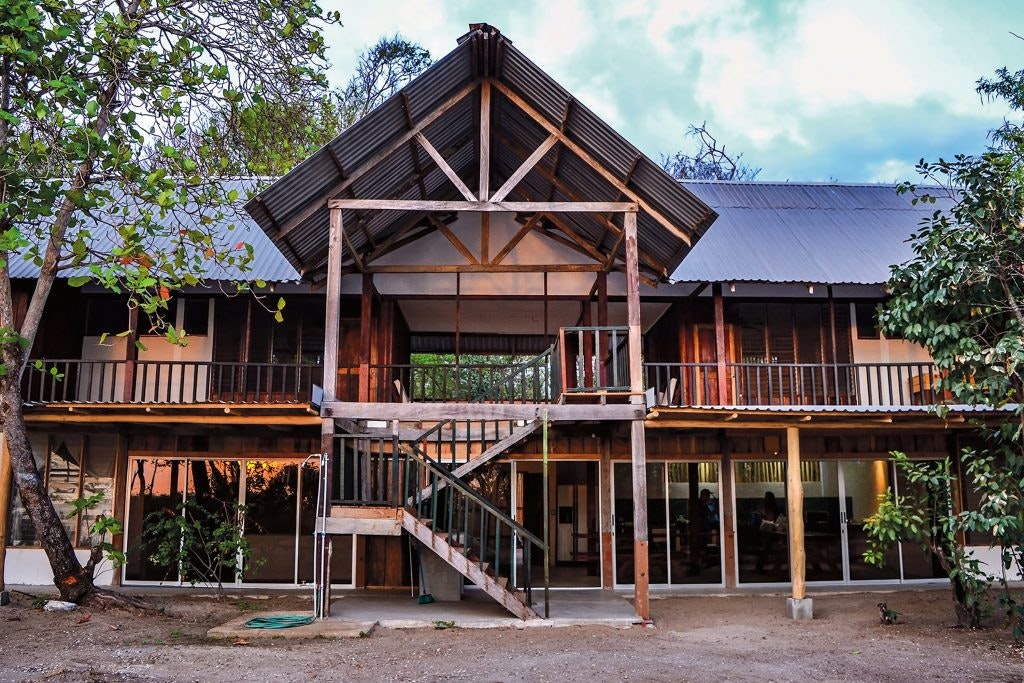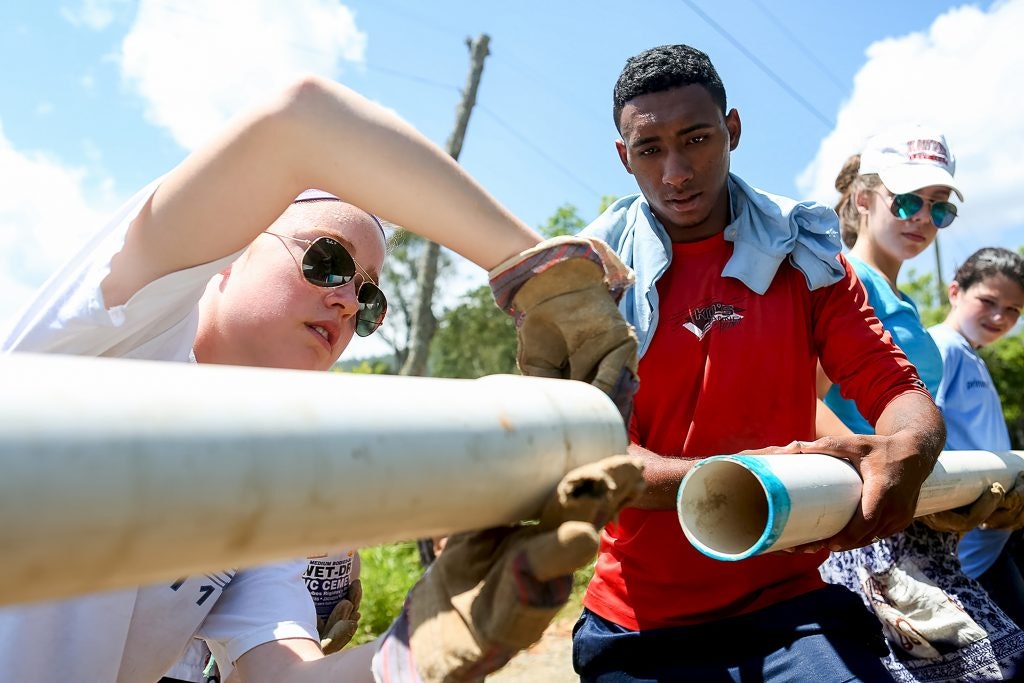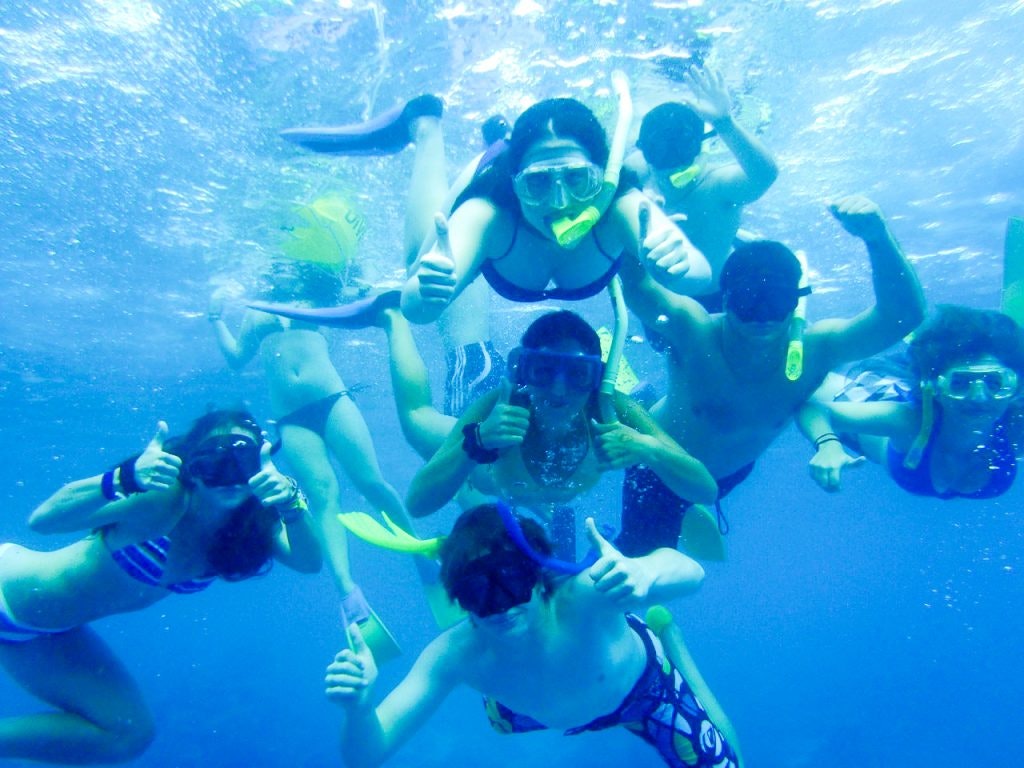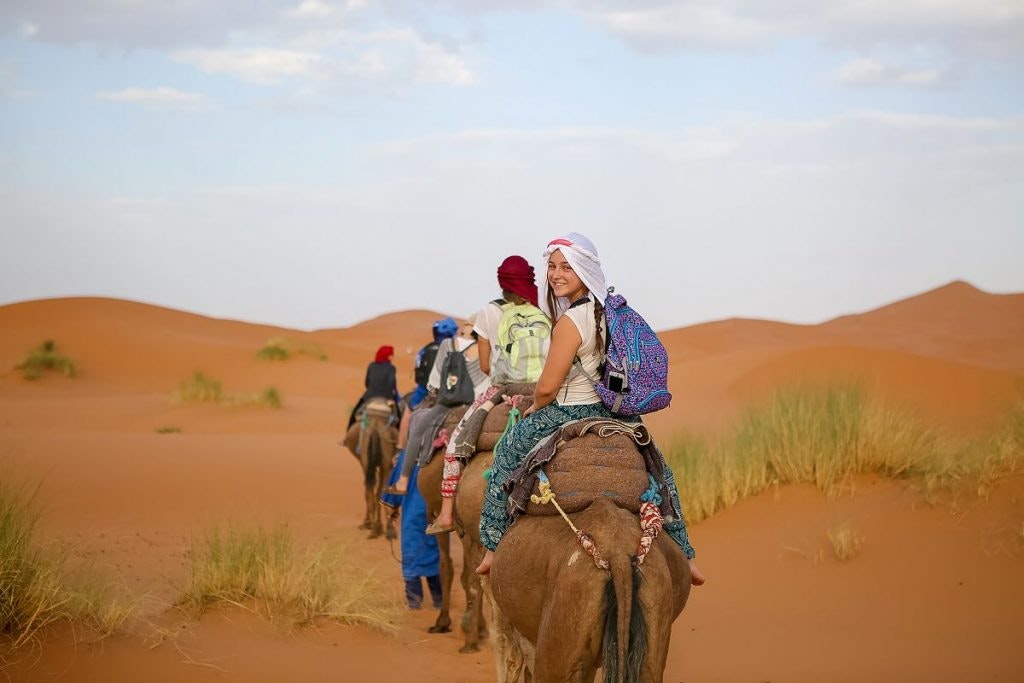How to Pick a Travel Program
There are several considerations to make when picking a program. This includes the type of experience your teen may want, what safety measures are in place, and what specific countries may be of interest.
-Benefits of Immersive Travel
Generally youth in Generation Z prefer authentic travel that highlights “experiences.” This type of trip will include numerous activities and will allow teens to see how others really live in their countries.
Cassandra Salazar, who traveled to Fiji and New Zealand as part of Rustic Pathways’ gap year program, said she found the immersive travel experience to be the best way to take a journey.
“I absolutely LOVE the balance between volunteering in Fiji, meeting the most beautiful people, gaining a deeper insight into this world and learning the difference between travelling as a tourist and REALLY travelling, paired with exhilarating thrill activities in New Zealand!! Perfect combo!,” Salazar wrote.
The article How Rustic Pathways Makes Programming and Operational Decisions gives a broad overview of how this works. As it notes:
“We want students to have authentic experiences in safe and welcoming communities, and to have the opportunity to experience a genuine perspective about what life in that country or community really means. Without getting off the beaten path, it’s hard to unearth this in a real and genuine way. By developing long-term relationships with communities, we’re able to share their stories with our students.”
![]()
If you choose this kind of travel program for your teen, charts like the one shown here give important details like ages ranges and what elements are included on a trip.
![]()
This can help parents quickly see how many service hours a trip has, if any, and other aspects, such as the level of adventure. It also makes it easier to diversify a teen’s summer experience if a teen may want one trip with more service and one with more adventure.
-Accommodations & On-Program Travel
Parents can consider how many Western-style amenities their teen may want during the trip versus living out of a backpack. Rustic uses base houses and homestays during many of its programs that have more worldly comforts, but students who want more adventure may prefer more rustic living options. Regardless, all accommodations are checked by staff and meet our highest expectations of safety and security. Showers and flush toilets come and go, but safety and health never fluctuate.

Live in the comfortable Surf and Service Base conveniently located on the beach. Copyright: © 2018 Rustic Pathways
-Service Hours & Exploring Career Options
Some students may need a certain number of service hours. They also may want to explore career opportunities or work on particular language skills. There are a number of options.
A student interested in environmental science could try a program like the Turtle Conservation Project in Costa Rica or Marine and Wildlife Conservation in Thailand. A teen wanting to improve their Spanish could try the Pura Vida Service program. Students interested in healthcare could try the Public Health in the Caribbean program.
Some service opportunities will provide close ties to local residents, such as installing water systems, where students work hand in hand with villagers. Programs like the Mountain Air and Village Service in the Dominican Republic have these opportunities.

Copyright: © 2015 Rustic Pathways Usage with express permission only.
-Adventure Levels
Another consideration is how much of an adrenaline rush a teen may or may not want. Adventure activities are optional but encouraged. Common activities may include zip lining, white water rafting, surfing, snorkeling, and hiking in remote areas.

Jump into the water for some snorkeling at one of Fiji’s beautiful reefs. Copyright: © 2011 Rustic Pathways
All-adventure options include trips like the Southeast Asian Adventurer program with whitewater rafting, trekking with elephants, ziplining and more. Programs with a mixture of some service but lots of adventure too include options like The Heart of the Jungle in Costa Rica and Moroccan Wanderer.
-Special Accommodations
If your teen has a food allergy, dietary restrictions, or other considerations, travel advisors can help navigate that. A teen with a nut allergy may want to be careful about traveling to a country like Thailand where nuts are frequently used in the cuisine, but could easily travel to other nations.
-Country Details
Of course for some teens, going to a particular country is appealing. Rustic Pathways has created country books for 17 nations. These resources give some history and facts about the countries. They also include photos and some basic language tips, including greetings and useful sentences.
For more details about countries, Rustic also has blog posts about several nations that can be accessed below:
Dominican Republic
Fiji
Australia
Mongolia
India
Morocco
Tanzania
There also are numerous country photos from Rustic’s programs on its Instagram page.
-Safety Information
Safety is of course paramount, so choosing a company with a lot of experience is helpful. Having strong ties to the local community also is key since residents will have important knowledge about many factors in their area – ranging from safe areas to visit to any environmental pitfalls.
Rustic Pathways has a page with health and safety measures that covers some important considerations. Other articles with helpful details about program safety include:
5 Safety Questions You Should Ask Every Provider of High School Travel Programs
How Rustic Pathways Evaluates Homestay Partners for Student Travel Programs
Why We Spend Four Months Hiring Summer Program Leaders
How We Train Our Program Leaders and Why It Matters
-The Bigger Picture
Many communities rely on tourism to keep their economies operating. Some long-time travel operators like Rustic Pathways do much more. Rustic has long-term relationships with villages in countries around the world and works on projects that span many years.

Community members and students working on a service project in the Dominican Republic
This type of service-travel makes a large global impact that can ensure a travel investment is doing much more than providing one trip for one teen.
The article Celebrating the Rustic Community’s Impact Around the World looks at just some of the projects that the Rustic Pathways Foundation has supported over the years.
-More Information
Rustic Pathways has a video series to explain some of the other aspects of picking a travel program for your teen. Please note many of these specific trips mentioned in the series will be re-added as the world recovers from Covid-19. Keep watching Rustic’s program page for updates.
How to Prepare for the Trip
Once a program has been booked, the next step is to prepare for the journey.
-Passport and/or Visas
For some trips, it’s important to ensure a teen from the United States has a passport that will not expire at least six months from the entry or return date, depending on the country, and that it has one or two blank pages for a stamp. This rule applies to countries like Peru and the Dominican Republic but not a number of other nations. It is good to check as far in advance of the trip as possible.
Some countries like India also require a visa. Contact G3 Visas, Rustic’s partner for U.S. passport holders, for information on that. International travelers can contact CIBT Visas.
-Shots, Currency Questions, etc.
Some other basic questions about travel can be found in the article: An Expert Answers the Top Pre-Travel Frequently Asked Questions
-Language Skills
Before the trip, it may be beneficial to learn some basic words and phrases in the language of the region where the student is traveling. Some of this information can be found in the country books listed above. You also can view: How to Say Hello, Goodbye, Please, and Thank You in Multiple Languages
-Food
It can be fun to try different foods before a trip to another country.
![]()
-Fundraising
Some teens get busy fundraising to help pay for their trips. This includes Rustic alumnus Zebulan Lyons who raised more than $1,000 selling t-shirts in his community. Other youth like Gavin save money from birthdays and holidays to use for travel fees.
-Packing
Here are some articles that give guidance on what and how to pack:
Rustic Pathways Travel Experts Share Their Best Packing Tips
What You Need to Know About Packing for International Travel
What Expert Travelers Wished They Would Have Packed for Their First Trip
5 Gifts for the Traveler in Your Life
-FAQs
More details about specific questions related to flights and international SOS can be found here.
What to Expect During the Program
Once the program is picked and the pre-planning is finished, the hard part is done. Now it will be time to enjoy the adventure. How that will unfold will of course depend on what program is chosen. Details about the day-to-day activities can be found in the program itinerary or by speaking with program leaders.
-Communication
One of the biggest questions for parents is whether or not you will hear from your teen during the trip. On Rustic trips, once a teen arrives safely at his or her destination, parents receive a safe arrival email within 24 hours. After this email, no news is good news.
Generally Rustic encourages students to try to unplug from technology and connect with their program experience. Programs vary in remoteness, but most provide the opportunity for teens to contact their parents. Rustic recommends working out these expectations with your child before the trip starts.
-Dealing with Nerves
It’s really common for teens to be a little nervous for their trip. Explore alumni stories to see how students deal with the nerves of traveling abroad.
![]()
-Expectations
Doing a little research before the trip will help teens understand cultural norms for dress and other factors during their trip. In the articles below, alumna Cate Brown gives some tips on how she fared during her journeys to southeast Asia:
Responsible Travel and Why it’s Important from a Student’s Perspective | Part 1
Responsible Travel and Why it’s Important from a Student’s Perspective | Part 2
What Happens After the Trip
Teens can continue utilizing what they learn during their travels long after the trip is over.
-Impact Ambassadors
Rustic students who are passionate about staying involved after their program can become Impact Ambassadors through the Rustic Pathways Foundation. They work individually or in groups to provide support to a community project they feel connected to.
Ambassadors include alumni like Charlotte who worked with the Rustic team to design a café at the Eco-Lodge base house in Fiji with a sustainable business plan and design plan. All proceeds from the café support Rustic projects in Fiji, and Charlotte and her family returned to Fiji to help with the construction.
![Charlotte Maracina]()
-School Leadership
Many teens get more involved in their schools after returning from an international trip. This includes alumni like Abigail Golden who traveled to Thailand and Cuba with Rustic.
“When I came home from Thailand, I found myself having greater confidence about all the things I was interested in my sophomore year,” Golden said. “I decided to join the swim team and volunteer as much as possible through my school. I became the leader of a school club, and throughout high school took on more leadership roles.”
-College Applications & Post-Secondary Plans
Teens who travel frequently use their experience for college applications and to pick their major.
In April 2021, Rustic received a thank you note in which Frederico Araújo talked about how his travel experiences to Laos, Thailand and Mongolia helped him. His note said in part:
“I wanted to inform you that I received a… letter from Harvard saying I got admitted to Harvard’s class of 2025!!!! Without a doubt, Rustic’s trips and my involvement afterwards contributed to this outcome, so I’m happy to share this awesome news with you and Rustic’s team!”
Years earlier, Rustic alumnus Alex Boulet shared his college essay that gained him acceptance in the University of Pennsylvania. Here also is an article with five tips on using a travel experience to write an essay for college.
In addition, numerous other alumni have used their experience to pick their majors ranging from environmental science to law school.
Most importantly, traveling gives teens confidence for college.
“When I decided to venture across the country to attend college, I was definitely apprehensive,” Linnea Martin said. “But hey, I figured that if I could successfully hold the attention of and teach a lesson to a class of a dozen kindergarteners in Fiji, climb the 1,600 steps up to Machu Picchu, or form meaningful and lasting friendships over the course of a week with people that were previously complete strangers to me; I could probably figure out college.”
-Careers
Beyond college, travel experiences can be used to help direct career paths, as well. Many alumni over the years have found themselves working their way into the medical field, international relations, and so forth. Ultimately, as Olsen found with her son Gavin, travelling creates many possibilities.
“My advice would be to simply trust and have faith that this will not be a trip but a journey,” Olsen said. “It’s not about the destination as much as it is about the human connection and service. It’s not about where they go on the outside but where they arrive on the inside.”
For more information on Rustic Pathways’ programs, please visit its current program page.









